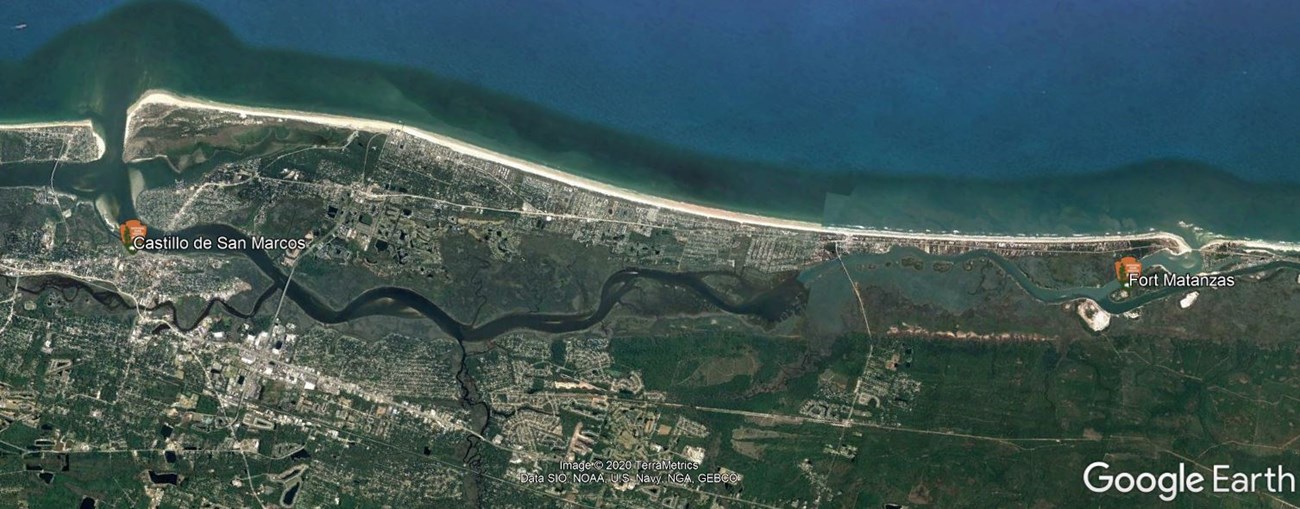
GoogleEarth Fort Matanzas is located within the Upper East Coast Basin Watershed, as defined by the Florida Department of Environmental Protection. This watershed is about 692 square miles in size and is located along the Intracoastal Waterway (ICW), stretching from the Ponce Inlet in Volusia County to the south of the park to roughly southern Duval County to the north. Because the ICW runs along the coast and is connected to the ocean by natural inlets, the watershed is relatively long and narrow in extent. (The watershed immediately to the west is much larger and is dominated by the St. Johns River, the second longest river in the state.) Because the national monument is located on portions of two barrier islands, the park is by definition nearly surrounded by water, with the ICW, the Matanzas River and Inlet, and the Atlantic Ocean comprising its shorelines. Luckily, this water is considered some of the healthiest in northeast Florida. In fact, shellfish are still harvested locally in some areas, which attests to the water’s cleanliness, and the local fishing is considered outstanding. However, as large areas within the local watershed “upstream” from the park continue to develop, the ecological health of the park’s waters is not guaranteed. As natural habitat is transformed by development into impervious surfaces, any rain that falls runs off and collects pollutants that happen to be on those surfaces. If the flow of water makes it directly into a waterbody instead of sinking into the soil, suspended pollutants enter that waterbody as well. Pollutants that may be transported from developed areas by rainwater include: pesticides, herbicides, oils and other vehicle fluids, sediments, and fertilizers. The influx of this mix of pollutants has the potential to harm the wildlife that lives downstream, even in the relatively pristine setting of a natural park. The lesson watersheds teach us is one of interconnectedness. An action taken in one place may have ramifications elsewhere. Even if we don’t live in or adjacent to a park, even if we live many miles away in fact, things we do or don’t do can have a direct effect on the well being of that park and its wildlife. If we choose to limit our use of chemical pesticides, herbicides, and fertilizers, and opt to favor organic alternatives instead, that choice alone can potentially reduce the amount of pollutants entering a park’s waters. The same can be said of keeping our vehicles well-maintained and free from drips onto the pavement. Also, planting our yards with native plants that don’t require fertilizers and pesticides to keep them alive goes a long way towards maintaining healthy soils, which collect rainwater and provide habitat, which in turn reduces soil erosion. These and other environmentally friendly choices we make in our own lives have positive ramifications that are felt throughout the watersheds we all share. |
Last updated: January 8, 2021
